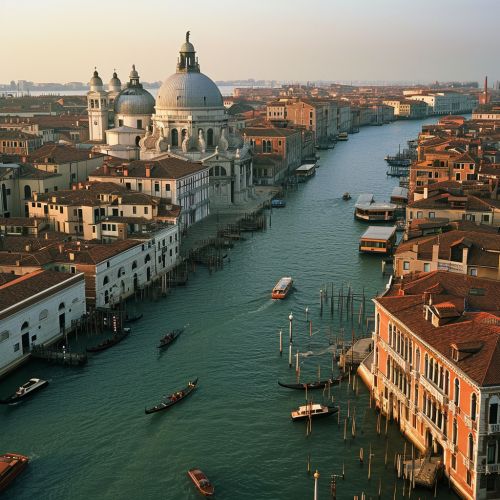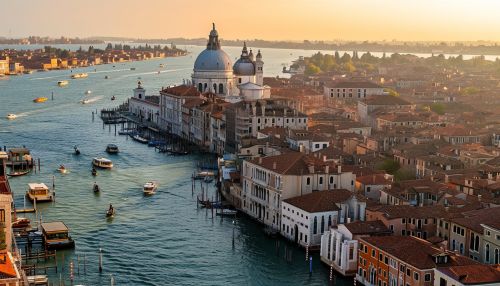Venice
Geography
Venice is a city in northeastern Italy and the capital of the Veneto region. It is situated across a group of 118 small islands that are separated by canals and linked by over 400 bridges. The islands are located in the shallow Venetian Lagoon, an enclosed bay that lies between the mouths of the Po and the Piave. Parts of Venice are renowned for the beauty of their settings, their architecture, and artwork.


History
Venice has a rich and diverse historical background, with influences from various cultures and periods. The city was founded by refugees from the Roman cities of Padua, Aquileia, Treviso, Altino, and Concordia during the barbarian invasions. The city became a major maritime power during the Middle Ages and Renaissance, and a staging area for the Crusades, as well as a very important center of commerce (especially silk, grain, and spice) and art in the 13th century up to the end of the 17th century.
Architecture
Venice is known for its unique and rich architectural heritage. The city's architecture is a mixture of styles reflecting the city's history of foreign domination. Venetian architecture is a fusion of the Byzantine, Gothic, and Renaissance styles. The most famous architect of Venice is Andrea Palladio, who left a significant number of buildings in the city.
Economy
The economy of Venice is based on tourism, shipbuilding, services, trade, and industrial exports. Murano glass production in Murano, lace production in Burano, and the tourist industry in Venice are among the city's traditional industrial sectors. Venice is one of the most important tourist destinations in the world for its celebrated art and architecture.
Culture
Venice has a rich and diverse cultural heritage. The city has long been a source of inspiration for authors, playwrights, and poets, and at the forefront of the technological development of printing and publishing. Venice is also known for its several important artistic movements, especially during the Renaissance period.
